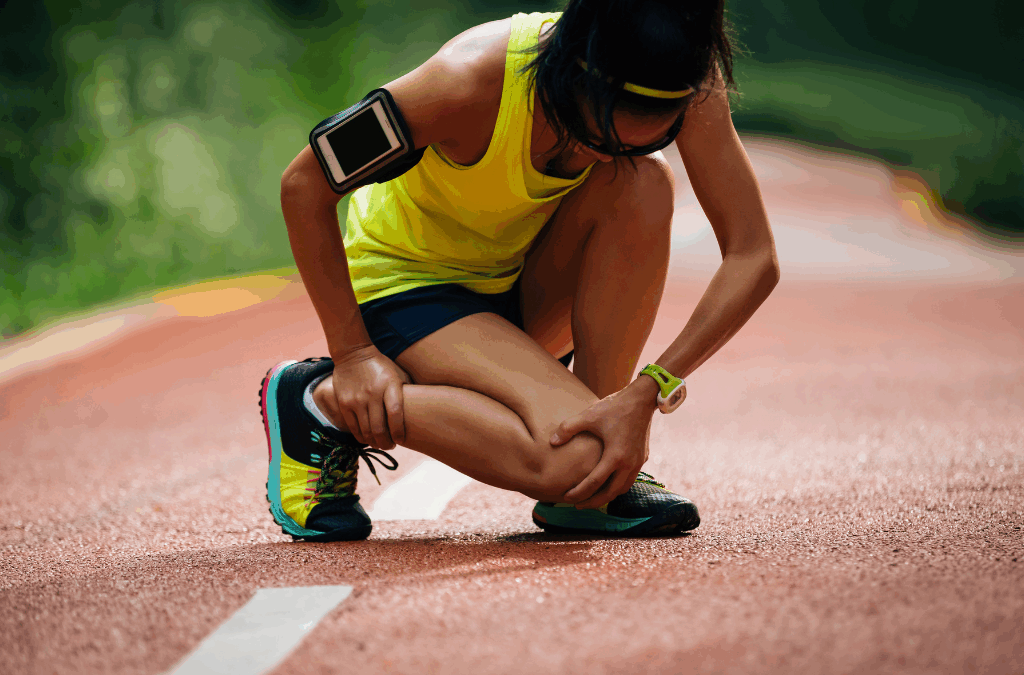- Post-run knee pain commonly arises from training errors, biomechanical imbalances, or inadequate recovery that overload joint tissues.
- Early management with activity modification and gentle mobility drills curbs inflammation while maintaining fitness.
- Persistent or worsening symptoms call for professional evaluation, gait analysis, and evidence-based therapies to ensure a safe return to running.
Feeling discomfort in your knees after a run is more than an inconvenience. It can cut mileage short, cloud training goals, and cast doubt on long-planned race entries. Although knee pain is common, among beginners and lifelong runners alike, it is not inevitable. By understanding how the knee handles repeated impact, learning why certain tissues flare up, and applying evidence-based solutions, you can preserve the joy of running while protecting the joint that makes it possible.
Understanding Post-Run Knee Pain
Running places substantial forces on the knee joint, often two to three times your body weight with every stride. Over time, these repetitive stresses can irritate structures within and surrounding the knee, including:
- Patellofemoral joint (behind the kneecap)
- Iliotibial (IT) band along the outer thigh
- Menisci (cartilage “shock absorbers” between femur and tibia)
- Tendons and bursae (soft-tissue buffers)
When any of these tissues become inflamed, the result is discomfort, stiffness, or sharp pain, commonly described as “runner’s knee,” IT band syndrome, or tendinopathy. Recognizing which structure is affected is critical to selecting the correct treatment approach.
Conditions That Commonly Trigger Post-Run Knee Pain
Several diagnoses account for the majority of “runner’s knee” complaints. Recognizing their distinct features helps direct treatment and prevents wasted effort.
- Patellofemoral Pain Syndrome (PFPS) often presents as diffuse ache around or behind the kneecap, especially after downhill running or prolonged sitting.
- Iliotibial Band Syndrome (ITBS) produces sharp, lateral knee pain that worsens with every stride, sometimes accompanied by a snapping sensation.
- Patellar Tendinopathy focuses pain on the tendon just below the kneecap, emerging during speed work, box jumps, or rapid mileage increases.
- Meniscal Irritation or Small Tears typically causes intermittent catching, swelling, or a sensation that the knee might “give way.”
Keeping a diary of symptoms, location, intensity, onset, and aggravating factors, provides valuable clues. For example, aching that fades during a run yet flares later suggests tissue overload rather than an acute tear. Conversely, sudden swelling paired with a pop warrants urgent imaging.
Common Causes of Post-Run Knee Pain
Mileage is only part of the story. Runners who:
- Increase distance by more than ten percent weekly
- Add back-to-back high-intensity sessions
- Iignore rest days raise injury risk significantly.
- Poor sleep
- Inadequate hydration,
- Have sub-optimal macronutrient intake
They lower the threshold for tissue failure, as do hard or cambered surfaces. Even workday routines such as hours seated with knees bent beyond ninety degrees, reduce blood flow to cartilage and prolong recovery time.
Footwear plays a role as well. Shoes age invisibly; midsole materials compress long before tread shows wear. If the foam no longer rebounds when pressed between fingers, cushioning is likely past its prime. Rotating pairs extends shoe life and exposes form issues early because each model interacts with the ground differently.
Individual anatomy sets baseline mechanics. High or low arches, slight inward collapse of the knee, or leg-length differences shift stress. Screening by a physiotherapist or sports medicine clinician can identify these subtleties and inform targeted drills.
Calm the Joint and Keep It Moving
When pain appears, the instinct is to stop all activity. A brief reduction in load is sensible, yet total inactivity slows nutrient delivery to the joint. Instead, substitute low-impact options for running during the first forty-eight hours.
Stationary cycling in a low gear maintains cardiovascular fitness without full body-weight load. Pool running or deep-water jogging offers a near-identical neuromuscular pattern while removing ground reaction forces.
Cold packs placed over sore regions for fifteen minutes reduce metabolic demand and ease discomfort. Wrap ice in a thin towel rather than placing it directly on skin to avoid irritation. After icing, gentle range-of-motion exercises, straight-leg raises or seated knee extensions without weight, encourage synovial fluid circulation, which nourishes cartilage.
Over-the-counter anti-inflammatory medications can assist during the acute stage, but long-term reliance masks warning signs. Use them sparingly, ideally paired with a written plan that phases them out as mobility improves.
Professional Interventions
If conservative measures fail to yield improvement within four to six weeks, advanced therapies may be indicated:
Targeted Physical Therapy
A licensed physical therapist can provide hands-on care, such as manual joint mobilizations and soft-tissue massage, alongside personalized exercise protocols.
Biomechanical Gait Analysis
Digital motion capture evaluates running mechanics in real time, identifying subtle faults that contribute to knee overload.
Extracorporeal Shockwave Therapy
High-energy acoustic pulses delivered to the painful region can promote neovascularization and accelerate tissue repair.
Regenerative Medicine Options
- Platelet-Rich Plasma (PRP): Autologous growth factors concentrate at the injury site to stimulate healing.
- Stem Cell Therapy: Mesenchymal cells from bone marrow aspirate support local tissue remodeling.
- Bracing and Orthotics
Custom knee sleeves or foot orthoses can correct alignment issues and redistribute joint forces.
Selecting any of these options requires a clear diagnosis, realistic timelines, and respect for tissue-specific healing rates. Combining modalities indiscriminately often clouds outcome assessment, so clinicians typically introduce one intervention at a time, monitoring progress against objective markers such as range of motion, strength ratios, and symptom scores.
Preventing Recurrence and Optimizing Performance
Once pain subsides, resisting the urge to jump straight back to previous mileage guards against relapse.
- Training Load Management
- Adhere to a 10% rule: increase weekly mileage or intensity by no more than 10%.
- Schedule recovery weeks with reduced volume every three to four weeks.
- Footwear Assessment
- Replace running shoes every 300 to 500 miles.
- Select shoes matching your gait profile neutral, stability, or motion-control categories.
- Regular Strength and Mobility Maintenance
- Continue foundational exercises at least twice weekly.
- Incorporate foam rolling or dynamic stretching into cooldown routines.
- Nutrition and Recovery
- Ensure adequate protein intake to support muscle and connective-tissue repair.
- Prioritize sleep, seven to nine hours nightly to facilitate systemic healing.
- Periodic Professional Check-Ins
- Schedule evaluations with a sports medicine specialist or certified running coach to fine-tune mechanics and address emerging issues before they escalate.
The Mental Side of Recovery
Physical healing progresses alongside emotional resilience. Runners often equate rest with lost fitness, but research shows cardiovascular capacity declines more slowly than most believe. Framing reduced mileage as an active investment, not passive downtime, promotes compliance. Setting measurable cross-training goals, a cycling time trial or swim distance, maintains motivation.
Mindfulness practices, such as guided breathing or progressive muscle relaxation, help manage discomfort and reduce muscle tension. Including these techniques in the cool-down period reinforces body awareness, making it easier to detect subtle warning signs during later runs.
Next Steps with Avid Sports Medicine
Knee pain following running is not an inevitable consequence of training but rather a signal to refine your approach. Early intervention, structured rehabilitation, and informed professional support form the cornerstone of successful outcomes. If discomfort persists despite diligent self-care, consult with the specialists at Avid Sports Medicine. Our team will provide comprehensive assessment, state-of-the-art treatments, and personalized guidance to help you overcome pain and achieve your running ambitions.
Schedule your consultation today and take the first step toward pain-free performance.

